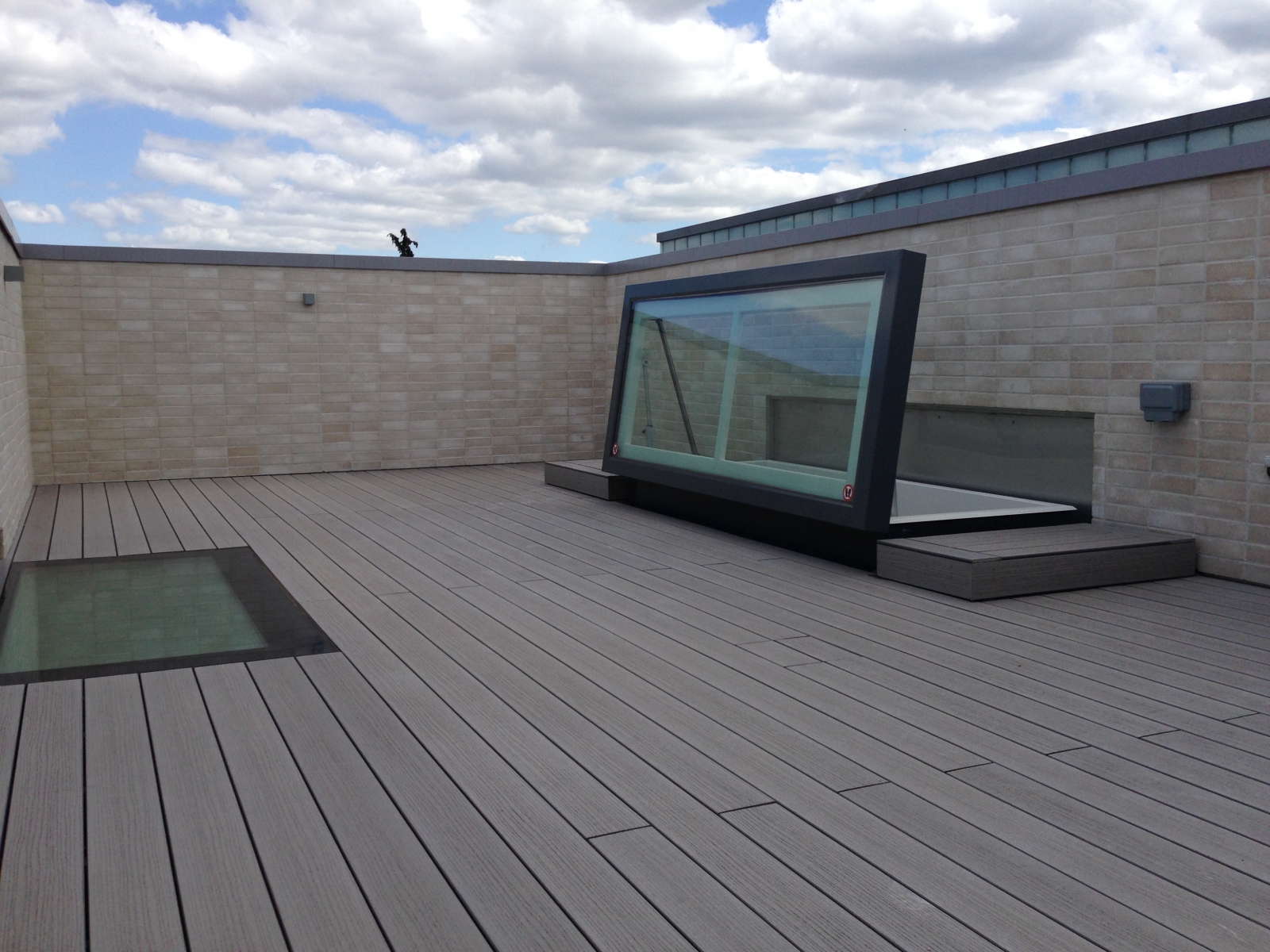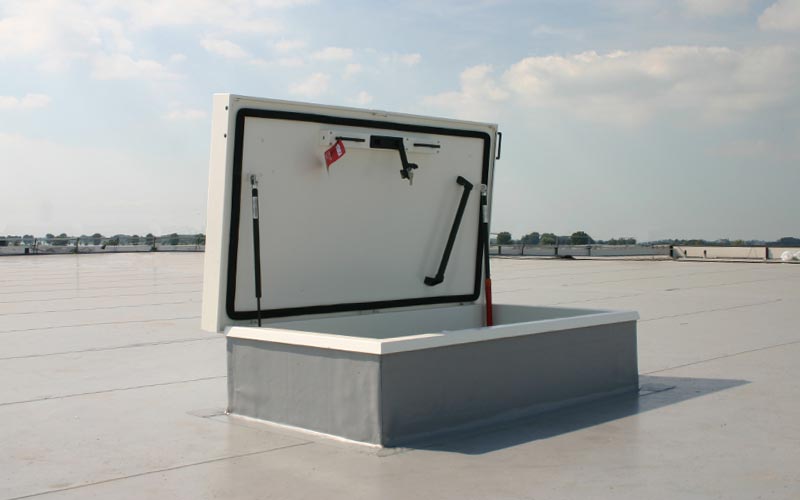Roof access hatch maintenance
As Staka’s roof access hatches are produced using sustainable stainless steel and applied with a high-quality, protective powder coating, the roof access hatches are practically maintenance-free. However, in order to retain its aesthetic properties, you should of course clean and repair any damages that have resulted from using your roof access hatch. Here’s what to look out for.
Maintenance of stainless steel
Stainless steel is an alloy composed primarily of iron, chrome, nickel, and carbon. The chrome forms an invisible layer known as an oxide film, which protects the underlying metal against further rusting (oxidation). It also restores itself when damaged. Additionally, the roof access hatches are equipped with a high-quality powder coating that acts as an extra protective layer for the material. Any damage to the coating can be easily repaired by touching it up with varnish (in the correct RAL colour, of course). Regularly cleaning the roof access hatches will prevent any potentially harmful substances from damaging the coating.
Maintenance of glass roof access hatches
Staka’s TopLight roof access hatches are equipped with triple glazing and designed for luxurious roof terraces. These roof access hatches also ensure that light floods into the room underneath the roof terrace. For the best amount of light, it’s important to take great care when cleaning the glass so as not to scratch it. When cleaning the roof access hatch, we recommend you use lukewarm water, household soap, and a soft sponge. Avoid using any caustic cleaning agents, as these could damage the stainless steel around the glass as well as the rubber sealing. Also avoid using a scourer – a soft cloth will do. You should also avoid using a pressure washer to clean the roof access hatches, as this can damage the coating.
are equipped with triple glazing and designed for luxurious roof terraces. These roof access hatches also ensure that light floods into the room underneath the roof terrace. For the best amount of light, it’s important to take great care when cleaning the glass so as not to scratch it. When cleaning the roof access hatch, we recommend you use lukewarm water, household soap, and a soft sponge. Avoid using any caustic cleaning agents, as these could damage the stainless steel around the glass as well as the rubber sealing. Also avoid using a scourer – a soft cloth will do. You should also avoid using a pressure washer to clean the roof access hatches, as this can damage the coating.
Maintenance of polycarbonate
Staka EasyLight is an alternative to the glazed roof access hatches. Instead of glass, it has a polycarbonate window. Polycarbonate is plastic and more fragile than glass. As such, only use lukewarm water mixed with household soap when cleaning the polycarbonate. To prevent scratching, never rub windows dry after cleaning. Instead, dab them with a soft cloth. It’s also important to avoid using products that are not suitable for use on polycarbonate, such as silicone, timber protectors, glues, duct tape, and chemical vapours. To prevent condensation in the channels of the polycarbonate, make sure that moisture sources such as plants, clothes dryers, and washing machines are not placed directly under the roof access hatch, and be sure to provide sufficient ventilation. Do not remove ice and/or frozen snow on the windows.

- 2026 © STAKA Bouwproducten B.V.
- PostAds
- All rights reserved.

 UK
UK Nederlands
Nederlands Deutschland
Deutschland US
US La France
La France


